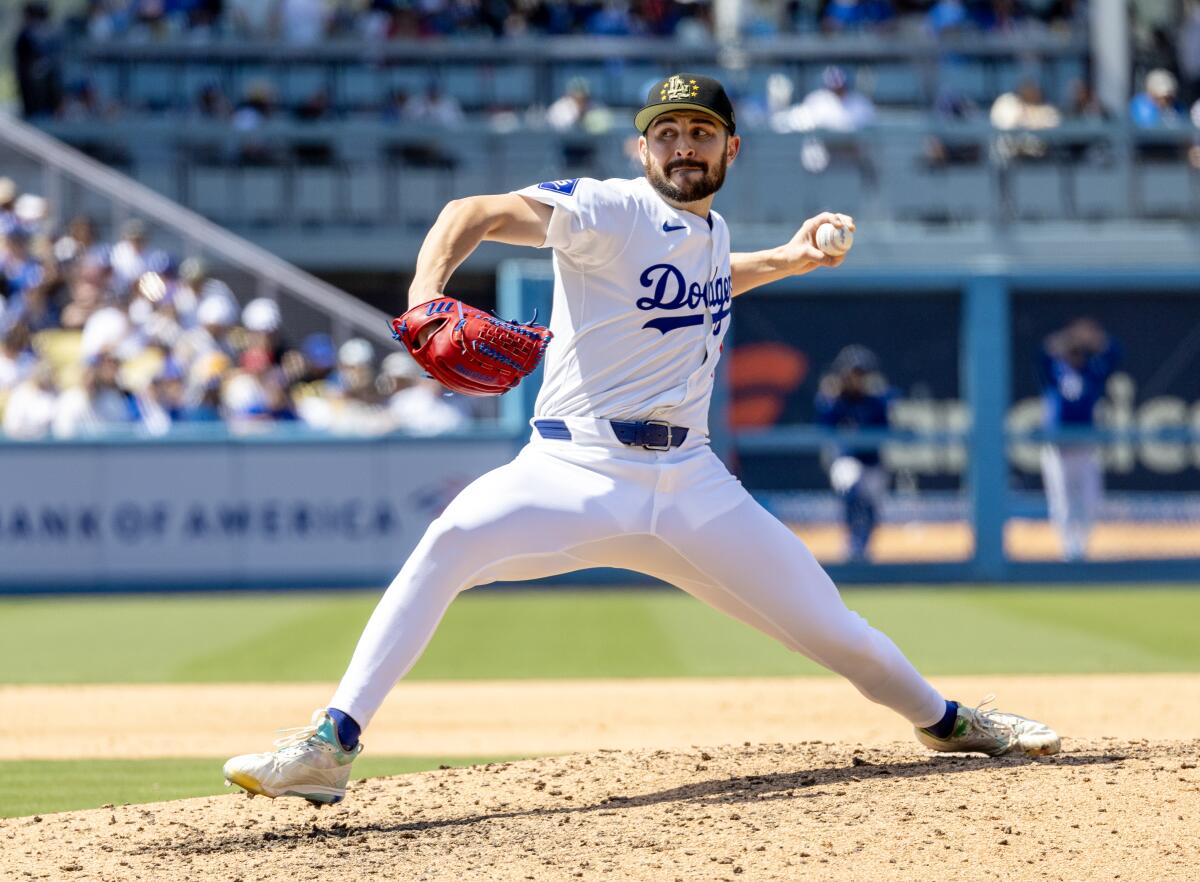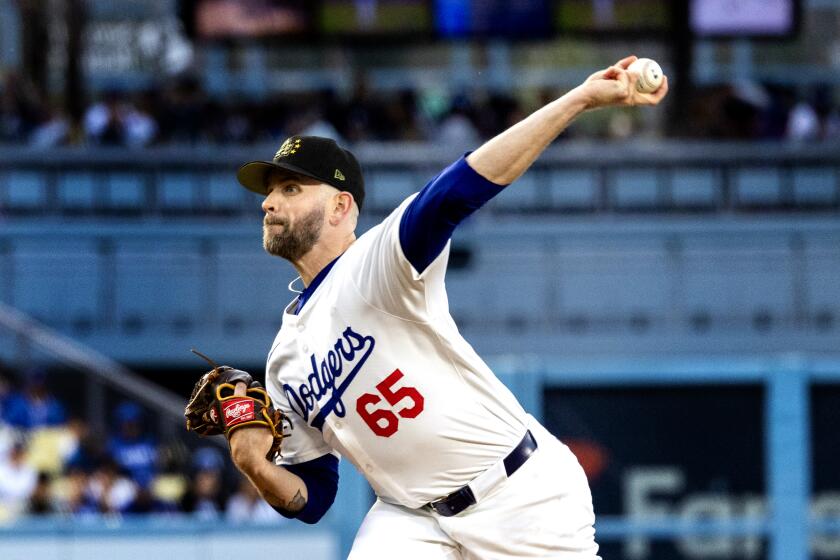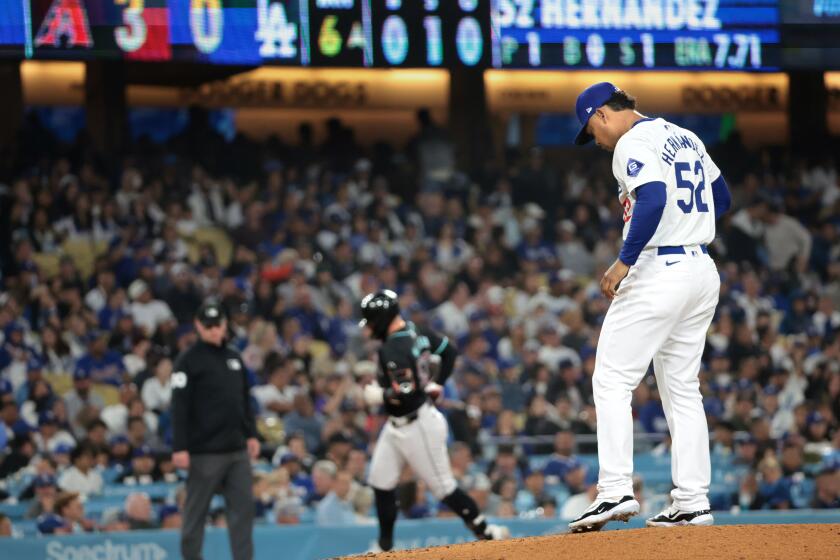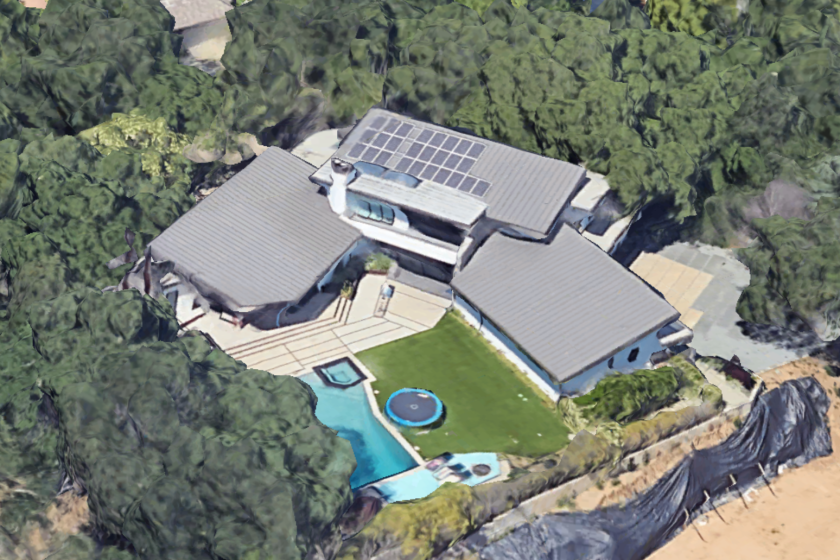How the Dodgers’ Alex Vesia found his way back into a high-leverage role in the bullpen

- Share via
In the life of a major league relief pitcher, highs and lows are part of the landscape.
The nature of a one-inning role makes volatility in performance inherent. Even small struggles or brief stumbles can snowball into icy, elongated slides.
It’s why, while rags-to-riches stories might be common in MLB bullpens, so too are tales of the inverse. Even established big league relievers can be susceptible to ruts from which some never recover. Once the avalanche starts, it can feel impossible to halt.
Twelve months ago, it looked like Dodgers lefty Alex Vesia was about to be buried.
In 2021 and 2022, Vesia was one of the best left-handed relievers in baseball, ranking third in all of the majors (among relievers with 90 total innings) with a 2.19 ERA while carving out a crucial role in the back of the Dodgers bullpen.
James Paxton is 5-0 with a 2.84 ERA this season, despite a shaky start and the fact he is without one of his key pitches.
Then, in the first half of 2023, it all fell apart.
Last April, Vesia had an 8.68 ERA. In May, he was sent down to the minors for the first time since early 2021. He returned for a month in June, but gave up seven earned runs in 10 outings. And by the start of July, he was back in triple A again — riding the kind of roster roller coaster that typically prefaces a reliever’s decline within (or outright departure from) an organization.
“It was terrible,” he said. “Not fun.”
In one of the more unexpected recent turns for the Dodgers bullpen, however, Vesia has rediscovered his old levels of production.
Since last July, the 28-year-old has a 1.92 ERA in 53 appearances, the ninth-best mark in the majors during that span. This year, his 1.23 ERA trails only closer Evan Phillips in the Dodgers bullpen and ranks 11th among qualified National League relievers.
As the Dodgers’ lone high-leverage lefty for much of the season, he has given the club’s banged-up relief corps a key situational weapon in their late-game plans.
And, he is staging the kind of resurgence that for many relievers never materializes, shaking off the struggles of his first-half performance last year by returning to the stellar form that fueled his rise as a big-leaguer in the first place.
“His confidence is starting to grow,” manager Dave Roberts said recently. “We’ve certainly leaned on him.”
Last year, the Dodgers were doing the opposite, quickly ushering Vesia out of a leverage role, then off the MLB roster entirely, during a vexing start to his 2023 campaign.
One problem, Vesia identified in hindsight, was his seven-days-per-week offseason training regimen. While it made his body plenty strong entering spring last year, his movements on the mound became too tight. He couldn’t separate his hips and shoulders in his windup. He couldn’t finish his delivery with a fluid release.
“My body just felt very, we call it ‘bricked out,’” Vesia said. “You could see it in my throw … When you’re restricted and you’re fighting through your mechanics, it’s really hard to be a good pitcher.”
The Dodgers go hitless in eight at-bats with runners in scoring position and lose to the Arizona Diamondbacks.
Indeed, Vesia’s once-wicked arsenal lost its teeth.
Instead of using his slider to set up elevated fastballs, Vesia’s approach became too predictable. Fastballs were missing over the heart of the zone. Sliders were missing wide for easy takes. Suddenly, even Vesia’s own teammates could identify the way opponents attacked him.
“They’re just gonna eliminate anything that doesn’t look like a fastball,” Phillips told him at one point last year.
And when they do that, Vesia knew, “they’re gonna mash,” he said. “It’s bound to happen.”
Despite that, however, Vesia tried to remain unfazed.
Upon being sent to triple A, he drew hope from an already unlikely career path. In college, Vesia was an unheralded, soft-throwing prospect at Division II Cal State East Bay, going undrafted as a junior after posting a 4-6 record and 4.82 ERA.
As a senior, though, Vesia had a breakthrough. His fastball velocity improved. He set a career-high in strikeouts. He posted a 1.94 ERA. And he was drafted in the 17th round by the Miami Marlins, eventually becoming the first Cal State East Bay product to ever reach the majors.
“Nobody expected me to be where I am today,” Vesia said. “So you’re familiar with adversity. You’re familiar with adjustments. You’re familiar with that process. I think that’s huge.”
Last year, nonetheless, presented new obstacles — both physically with Vesia’s mechanics, and mentally with the introduction of the pitch clock, forcing Vesia to streamline his fidgety, high-energy presence on the rubber.
By mid-June, Vesia had more losses (four) than holds (three). And after being sent down once in early May, he was demoted again near the end of June.
“I had to definitely figure out a different routine,” he said. “It took me a little bit.”
It was just before his second demotion, though, that Vesia finally found something.
In a game against the Angels in Anaheim, he stranded a couple of runners in one inning, then retired Shohei Ohtani and Mike Trout in consecutive at-bats to begin the next.
The Dodgers still sent him down a few days later, in a pre-planned shuffle of the bullpen.
“But I walked out of the meeting,” Vesia recalled, “and I was like, ‘I’m totally fine.’ Because you know when things are getting better. When you’re searching and finally find it. Then, it’s like, keep going. Put one brick on top of the other.”
When Vesia returned to the majors in early July, he worked scoreless outings in 26 of his final 33 appearances, posting a 2.35 ERA over that stretch.
Dodgers superstar Shohei Ohtani has paid $7.85 million for a modern mansion in the foothill city of La Cañada Flintridge, real estate records show.
It has continued into this year, too, with Vesia posting the lowest WHIP (0.955) of his MLB career.
“He has shown a lot of courage, just trusting our information and pounding the zone,” bullpen coach Josh Bard said. “We’re built on throwing strikes. And when he does that, he has a lot of success.”
It’s the kind of success that was once eluding Vesia, a resurrection not every big-league reliever can manage to stage.
“I tell you what, man, baseball’s highs and lows … you’re always learning, you’re always adapting,” Vesia said. “But when your mechanics feel good and you’re not fighting your body, it’s a lot more free and easy of a throw.”
More to Read
Are you a true-blue fan?
Get our Dodgers Dugout newsletter for insights, news and much more.
You may occasionally receive promotional content from the Los Angeles Times.











